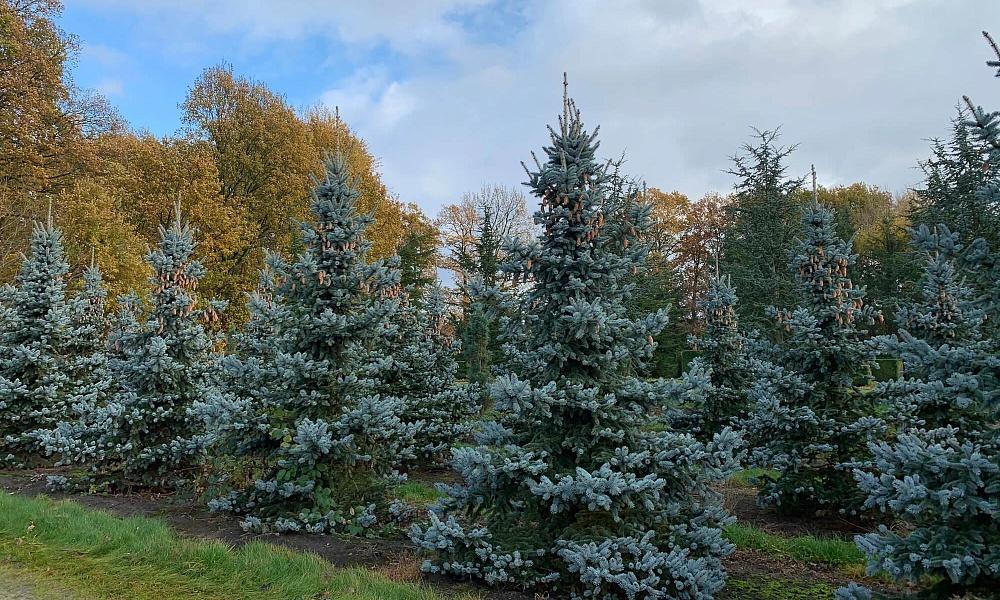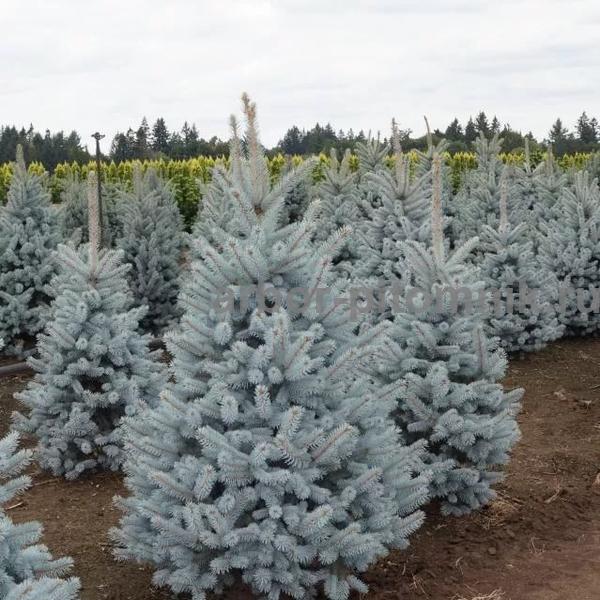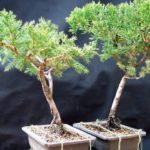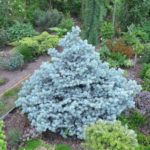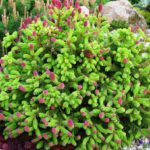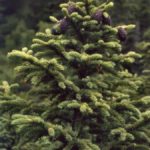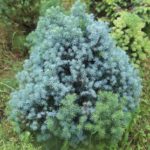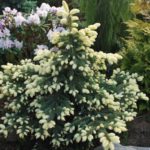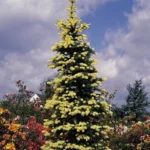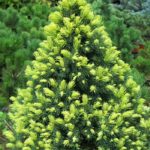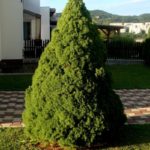Spruce of the Hupsi variety is a unique variety that has qualitative differences from other conifers. A special feature of the culture is the unusual blue tint of the needles. An undoubted advantage of the plant is its high degree of resistance to the influence of external factors. In harsh climates this remains an important characteristic. The plant is often used in landscape design. It is used as an accent or combined with other crops.
Description
Hoopsey spruce is characterized by unique blue needles. It is quite prickly and has a slight waxy coating that protects against the influence of external factors.The culture is characterized by a fairly wide crown with a pronounced conical shape. It is distinguished by uniform and symmetrical branching. In this case, the shoots are located almost clearly horizontally in relation to the trunk.
The culture has a low growth rate. In 1 year it grows by a maximum of 10-15 centimeters. By the age of 30, the plant reaches 11-12 meters. In this case, the crown width is 4-4.5 meters.
The plant is distinguished by powerful shoots and a high degree of resistance to frost. This makes it possible to grow crops in harsh climates. It can easily withstand the weight of wet snow in late winter. Another important feature of the culture is the lush shoots, which are slightly raised upward and create a feeling of strength.
The needles of the plant reach 3 centimeters and remain on the tree for 5 years. However, every spring new needles appear on the tree, complementing the existing ones. Blue spruce is characterized by small horizontally located shoots of light brown color. Another feature of the culture is the pointed top, which makes the tree surprisingly decorative.
Landing
In order for the Hoopsie spruce to grow and develop well, it is important to carry out planting work correctly. At the same time, soil compaction and moisture stagnation should be avoided. When choosing a place for planting, it is important to focus on the location of groundwater - it must lie deep enough. It is imperative to provide a drainage layer of sand or crushed brick. Its thickness should be 15-20 centimeters.
When planting fir trees in groups, it is necessary to maintain a distance of 2-3 meters between plants. In this case, the planting hole is made 50-70 centimeters deep.
When placing a seedling in a hole, it is important to ensure that the root collar is flush with the ground surface. In order for a crop to develop better, it needs to prepare a nutrient substrate from leaf soil, turf, peat and sand. It is recommended to mix these components in a ratio of 2:2:1:1. It is also permissible to add 100-150 grams of nitroammophoska to the composition. Immediately after planting, it is recommended to water the tree with 40-50 liters of water.
Care requirements
For the normal development of culture, it is recommended to follow the following rules:
- In hot weather, water the plant regularly. For 1 seedling it is worth using 12 liters of water. This dosage cannot be exceeded, otherwise the root system will begin to rot and the needles will crumble.
- After watering, loosen the tree trunk circle. But this must be done carefully to avoid damage to the root system.
- Protect the plant from frost and scorching sunlight. To do this, you need to make a frame around the tree and stretch non-woven material that allows air to pass through.
- Immediately remove dry and damaged shoots.
- To stimulate the growth of branches, treat with special solutions. For this you should use “Epin” and “Zircon”.
Reproduction
Blue spruce can be propagated by seeds or cuttings. In the first case, planting work is usually carried out in spring or autumn. To do this, the seeds need to be soaked in water and treated with growth stimulants. When propagating by cuttings, you should use lower branches measuring 10 centimeters. They need to be treated with a growth regulator and placed in moist soil.
Diseases and pests
Young plants are susceptible to attacks by sawflies, which eat growing needles. Pest caterpillars can be easily destroyed by Actellik or Fury.Small mites also pose a danger to Hoopsie spruce. They are evidenced by the appearance of small cobwebs on spruce. To get rid of parasites, it is worth using acaricides. It is also recommended to irrigate the tree with water.
Application
The culture has excellent decorative properties, which is why it is often used in landscape design. Wood can be used as the main accent or combined with other crops.
Hoopsi spruce is a very common ornamental crop that fits perfectly into various garden compositions. In order for the plant to always remain attractive, it requires proper care.

